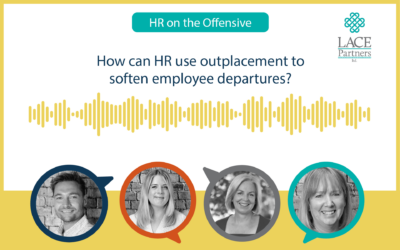A recent McKinsey article reported that ‘we have vaulted five years forward in consumer and business digital adoption in a matter of around eight weeks’. With the event of Covid-19, workforces have suddenly been required to adapt to remote ways of working. Many need to learn how to use new technologies and develop new skills.
As the impact of the crisis continues, businesses are reviewing their future operating models with a view to continuing with home working to some extent beyond lockdown. Gartner has reported on surveyed CFOs’ intentions to shift some employees to remote work permanently. In another article, McKinsey identified the skillsets that would help employees respond well to change, one aspect of which is the ‘ability to operate fully in the digital environment’. To support this, employees will require training and support to adopt new technologies and systems in their everyday work.
This is where we believe investing in a Digital Adoption Solution (DAS) for your systems is key. We have previously shared why we see the value in a DAS (read about it here). But, very simply, when thinking about supporting your workforce through home working, a DAS could provide contextual in-application support to assist users to complete new or unfamiliar processes. A DAS could be used as a communications channel to reach your workforce, no matter their location. A DAS could also provide content to support reskilling the workforce with all the information they need in one place. Some can even automatically create content to reduce effort required to produce user support documentation in short time frames. And all of this can be measured and reported to so you as the employer can understand the take up and adoption of new ways of working.
Organisations need to act quickly to support their workforces in redefined ways of working. This is even more important during the current crisis. We have six top tips to share with you to accelerate your implementation success:
Include the right people
Get the right stakeholders involved from the outset. That means you need a focused group of people who understand your business and the way people work. But also people that are empowered to make decisions. It is likely this will include people from various business areas e.g. IT, HRIS, content owners, Learning & Development and other functional area representatives. Failing to include or getting the buy in from the right people from the start could create obstacles at a later stage The level of involvement of each of these stakeholders will vary depending on the new systems and processes ownership of the solution, enterprise IT complexities and content scope.
Make the user experience seamless
When it comes to design, your end user experience should drive design decisions. Put yourself in the shoes of the different user groups. Think about how they will interact with the system and therefore what DAS functionality will work best. Will they be accessing the system on mobile or desktop? Content and functionalities could render quite differently on each and some solutions may only be available on desktop for example. Think about how the user will get to the help they are looking for as quickly and easily as possible. If your DAS is going to sit across multiple platforms, how will this look to the end user? This is a great opportunity to create a seamless experience and drive up user behaviours and adoption on more than one system.
Less is more
Content relevance should be a top priority. Take the time at the beginning to create a plan for what you intend to use your DAS to support. Think about where your customers need the most support. And what is the best way to deliver the support using the DAS functionalities available. As with any training content, it should be kept relevant to the audience and delivered in the most effective way. Don’t just have content for contents sake. It is important, especially in the early days, that you make a good first impression for users. Content should also not be cumbersome to maintain so avoid including detail to the level that would need to be reviewed and updated too often.
Never overlook testing
A DAS does not require the same level of testing as other SaaS products, but testing should not be overlooked. Testing by the project team followed by UAT by a sample of future users is important to iron out any unexpected technical issues and ensures users have a seamless experience. If your DAS is being implemented concurrently with the new system, then you could combine the DAS testing with the new system testing. Alternatively, if it is being implemented separately, think about how you could utilise a business champion or user experience network that can then also support a successful roll out.
Consider the ‘what’, when and how of launch
One of the purposes of a DAS is to support the shift to what Bersin has coined as ‘learning in the flow of work’, providing point in time support for your people within your SaaS platform/s. The support should be intuitive and require little explanation, however communication and education of when and how end users should use your DAS is critical. Generally speaking, you should be able to use the DAS as a communication channel in itself. Education could be a quick ‘how to’ video to users when they log into the target system introducing your DAS. Even after the initial launch of a DAS, you will always have new starters to your business so be sure to include this type of education in inductions.
Set yourself up for long term success
Establish a clear post go-live support model and make sure you understand the effort required to maintain your DAS solution once the implementation team has moved on. This support model is essential to optimising your solution and realising the maximum return on investment. Who is going to own the solution, be responsible for the management of content and functional updates, who looks after the technical facets and who will curate the data and insights offerings? The support model should also define change control processes and roles, which you may choose to resource in house or engage an external application management partner. You may even chose to go down the route of hiring a Digital Adoption Manager and create a dedicated adoption business function.
Now more than ever your workforce needs to feel that it is supported in their ways of working. By recognising that a DAS can provide additional support to your employees who may be working remotely you are signalling that you value their ongoing development and are supporting them through the crisis.
Of course, implementing your solution is only the start of your digital adoption journey – we’ll be exploring ways to optimise the features of your DAS, post implementation, in a future blog.
We recognise many businesses are currently experiencing a rapid shift to adopt new digital technologies. If you would like to speak to us about the ways in which a Digital Adoption Solution can support your people and your business as we move into the new world of digitalisation, get in touch at info@lacepartners.co.uk









